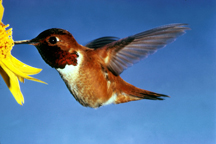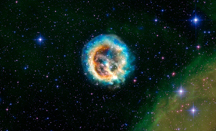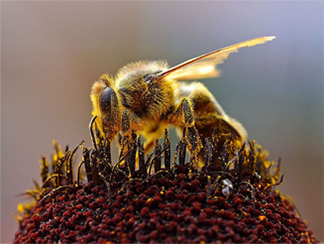


- MAKE YOUR OWN EXHIBIT
- WATCH A VIDEO
- READ A BLOG
- TACTILE & BRAILLE HTE
- AMERICAN SPACES
- PIN SOME IMAGES
- SHARE WITH A FRIEND

Topics: seeding the environment.
More about Seeding the Environment

The growth of new structures depends on the introduction of novel material into an environment. Bees distribute pollen from one plant to another, promoting reproduction in plants. Farmers seed and fertilize soil to enable the growth of selected crops.
Oxygen, iron and other heavy elements necessary for the formation of planets are distributed into interstellar space by supernova explosions.
Watch a video on Seeding the Environment.
More Info.
Seeding the environment occurs here, there, and everywhere in nature, through many different agents on every scale in the universe. Seeding can occur through both physical processes, such as wind, water, or supernova explosions, or through biological agents, such as bees and humans.
Flitting from flower to flower as they gather nectar to feed the hive, bees move pollen grains from a flower's male parts to the female parts of the same species, fertilizing the flower and enabling it to reproduce. Pollination by bees and other animals is crucial to the production of most fruits, nuts, and berries on which people and wildlife depend.
Although through random seeds distributed by birds and carried by the wind, plants may eventually grow, deliberate seeding of fertile soil by farmers has produced agriculture as we know it.
On a cosmic scale, supernovas distribute a different type of seed—heavy elements such as carbon, nitrogen, oxygen, silicon, and iron that form the basis for much of the world we live in. These and all elements heavier than helium are built up from hydrogen and helium atoms in the interiors of stars and ejected into space by stellar explosions. Some of this enriched interstellar gas may accumulate in a disk around another star, and form into dust grains. These dust grains can then act as seeds for the growth through collisions to form larger and larger clumps of matter until planets are formed.
Fun facts about seeding.
- Worldwide there are more than 100,000 different animal species that pollinate plants. Insects are the most common pollinators, but as many as 1,500 species of vertebrates also help pollinate plants.
- Pollinators are crucial to the reproduction of more than 75% of the world's flowering plans, and for production of most fruits, nuts, and berries on which people and wildlife depend. More than 150 food crops in the United States depend on pollinators, including blueberries, apples, oranges, squash, tomatoes and almonds.
http://www.fws.gov/pollinators/pdfs/PollinatorBookletFinalrevWeb.pdf
http://www.fws.gov/pollinators/images/RufousHummingbirdsm.jpg
- The total combined amount of corn, rice, and wheat produced worldwide is more than two billion metric tons, or more than 600 pounds per person.
http://faostat.fao.org/site/567/DesktopDefault.aspx#ancor
http://www.mrwallpaper.com/Summer-Cornfield-wallpaper/ - Supernovas from massive stars can seed surrounding interstellar gas with more than a billion times the oxygen contained in the Earth's ocean and atmosphere. This type of supernova occurs about once every fifty years somewhere in our Galaxy.
http://chandra.harvard.edu/photo/2009/e0102/e0102.jpg
Related Resources
Back to the Topics page

"Here, There, & Everywhere" (HTE) is supported by the National Aeronautics and Space Administration under grant NNX11AH28G issued through the Science Mission Directorate.
HTE was developed by the Chandra X-ray Center, at the Smithsonian Astrophysical Observatory, in Cambridge, MA.
Email: cxcpub@cfa.harvard.edu | Phone: 617.496.7941
Follow us: #HTEScience on Twitter





